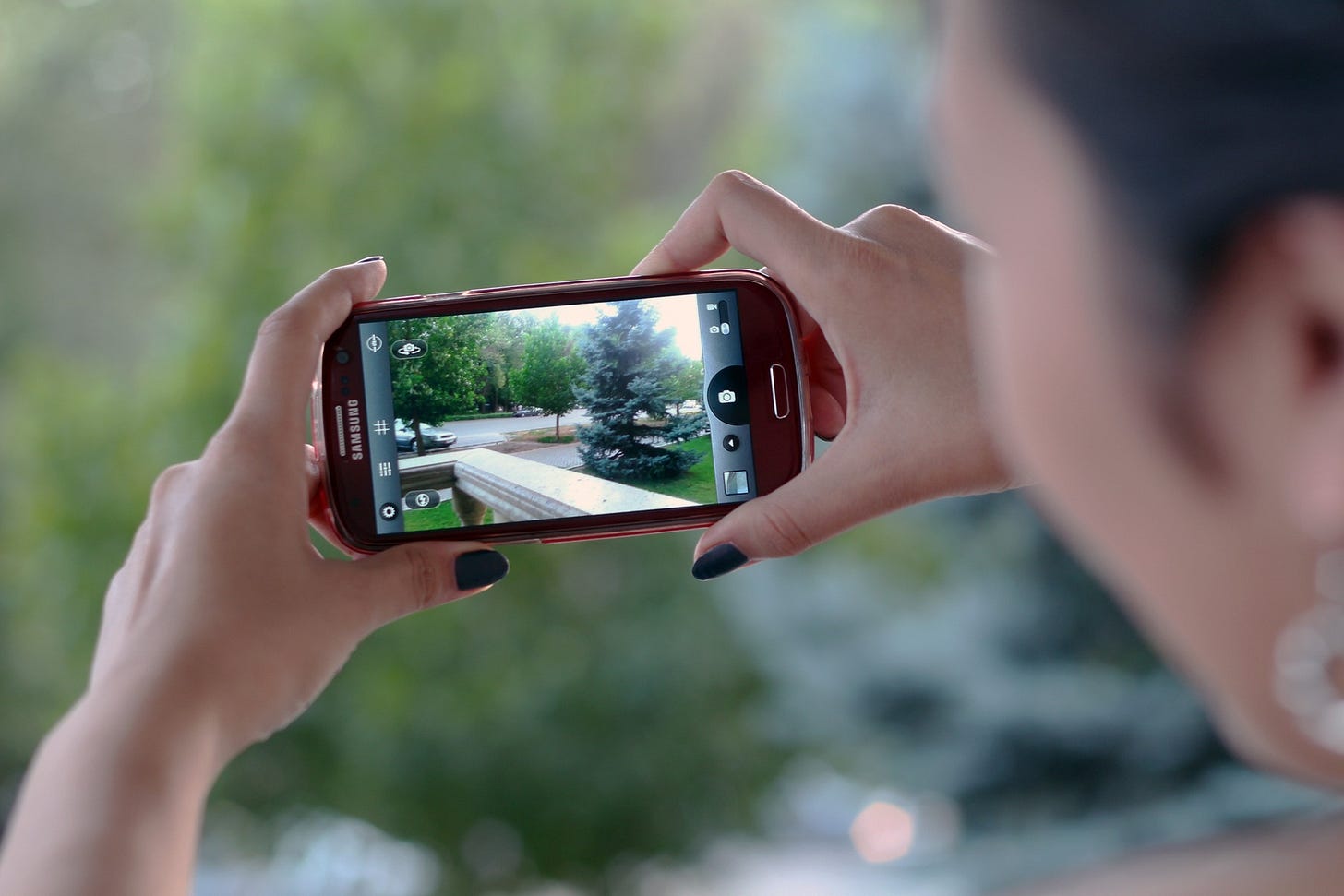#POIDH (Pictures Or It Didn’t Happen)
Bridging the Generational Divide in Naturist Photography Policies
In the 21st century, a new generational divide has opened up. As any parent/grandparent of a modern day teenager or 20-something will know, smart devices are part of their life blood. Without an active internet connection to hand they have a feeling of isolation and anxiety, even when around other people physically.
This makes more sense to anyone older if you take a step back and consider the world they’ve grown up in. In the UK, broadband internet was first introduced in 2000 at the heady speed of 0.5Mbps, and it has been getting steadily faster ever since. And the first smartphone was introduced by Apple in 2008. So to today’s 22 year olds always-on internet access has never not existed. And to a mid-teen, smartphones have always been, and continue to be, a life-constant. With Millennials and Gen-X’ers being the prime audience for smartphones initially, and with the tech companys’ marketing machines in overdrive practically forcing us to upgrade our phones every two years, is it any wonder that an abundance of second- or third-hand, not-quite-new-enough smartphones started finding their way into the possession of our children during their formative years.
After all, what parent would refuse the aid of Peppa Pig to entertain a grumpy toddler on a long car journey? And as they get older playground pressure to have newer devices grows, pester-power starts being applied to their parents, and soon those parents are putting brand new iPhones under the Christmas tree for their 9 and 10 year olds. A summary of recent UK-wide surveys from 2021 found that nearly half of all internet traffic came from smartphones alone, and that 99% of people aged 16 to 34 years owned a smartphone, with 100% of 16 to 24 year olds saying they were their primary or sole means of using the internet.
With the rise of the smartphone came another modern innovation that now relies on its omnipresence; social media. Facebook was launched in 2007, and introduced the world to the idea of mass online social connections without the need to know someone’s contact details up front. Yes, others such as MySpace and Friends Reunited had tried do the same before, but it was Facebook that first hit that critical mass of users that arguably made it truly engaging.
People wanted to share. Facebook, at the time, was based around the concept of a ‘wall’ of posts that just grew and stayed forever. But not every thought or opinion was always relevant all of the time. So in 2011, Snapchat first appeared. It was revolutionary for its time, as it is was only available as a smartphone app; you couldn’t use it with a computer or web browser like you could with Facebook, et.al. And what is more, its messages where ephemeral. Once viewed, a message would automatically be deleted.
As its evolved, Snapchat introduced ‘Stories’, so that for 24 hours only friends could see a broadcast message, allowing users to show people what you are doing right now. And together with its ‘Snapmaps’ feature which allows your chosen friends see where in the world you are, it created a whole new subculture of spontaneous meetups, parties, night-outs, and so on. It quickly became the social tool of a generation.
There was another feature present on smartphones from their outset that has also redefined society for the younger generations – cameras. Front and rear facing digital cameras, arguably as capable as many dedicated cameras, have redefined photography as a whole, with practically anyone now able to produce high quality and interesting images in a split second. Ok, and some pretty poor and amusing ones too!
But having a camera with you constantly, together with the fact that social media has grown up with them present, has meant that photos have become essential to sharing your current moments with your friends, or the whole world. Even the name – ‘Snapchat’ – includes the fact that it is based around picture messaging in its very title. So when you consider that these time-limited story pictures can also have digital frames added to them showing the creators mood, time, location, weather, and so on, it is easy to see that they literally become adverts for how a person likes to spend their time, the company that like to keep, and the places they like to visit. To deny someone who is younger than their mid thirties the right to do so is to diminish their enjoyment of a social gathering.
This has already collided headlong with the general naturist ethos of ‘no pictures’. For many decades photographs were things that were either held in a personal collection or else published in a national newspaper, with little in between. People taking ad-hoc photos at a naturist venue were, perhaps rightly, viewed with a certain amount of suspicion. The fear and secrecy that a lot of naturists still have about their lifestyle, and the potential for exposure to the world, still leaves a lot of people, and in particular the older generations, scared of a camera’s lens.
However with the decline in numbers from the younger generations at many naturist clubs, it is probably now time to question the role that social sharing may be playing in this, and indeed the very existence of the photography policies that have been part of most clubs’ rule books for so long. Don’t get me wrong, I’m not proposing that everyone should just stop caring about whether their photo is taken or not, but rather that a less legislative and more respect driven approach be taken.
For some people, it really does matter that they do not appear in any image, and that is perfectly fine and reasonable. Indeed, there are practical measures (e.g silicone wristbands indicating an acceptance of being in photos) that could be considered as part of such a solution. Because for others, if they don’t have images to show the world, that really matters too. The culture of “Pictures Or It Didn’t Happen” is very real.
The ‘respect not rules’ approach has already been shown to work in some naturist venues. Take Clover Spa in Birmingham for instance. People actively ask others if they mind being in a picture. If they do, a different angle is chosen or people temporarily move. People even take turns to sit under the sign over the hot-tub to have social-media friendly photos taken. Clover Spa has one of the highest profiles of all UK naturist venues in the non-naturist world, and has a mix of people visiting, from all age brackets. Whilst its success cannot be solely attributed to its respect-base photography policy, is it certain to be a contribuing factor.
The under 40’s need naturism. In a world obsessed with fashion, body shame and not going out unless you look ‘photo ready’, bringing the naturist approach to life to them can only do immense amounts of good. It is perfect for combatting the rise of body dysmorphia and other mental health issues of which the world is becoming increasingly aware.
Shared images of people in their natural state enjoying life are needed, and they need to be coming from the people themselves. The context is vitally important; official photographers at events can only go so far. A person saying through one picture on their own story “hey this is me nude in a hot tub and I feel great” is worth a hundred carefully curated images put out through a club’s official channels.
So rather than berate social media, clubs need to think how they embrace it. This means much more than merely creating an account and posting the occasional photo of a glass of beer on a warm day!
Respect is a founding principle of naturism and social nudity. As newcomers to the lifestyle learn what it is about, a respect based, informal photography ethos becomes ingrained as part of that. Is it not time for clubs - desperate for the next generation to take a look at them - to stop placing such large barriers in front of them which are going to inherently put them off before they even get there?







